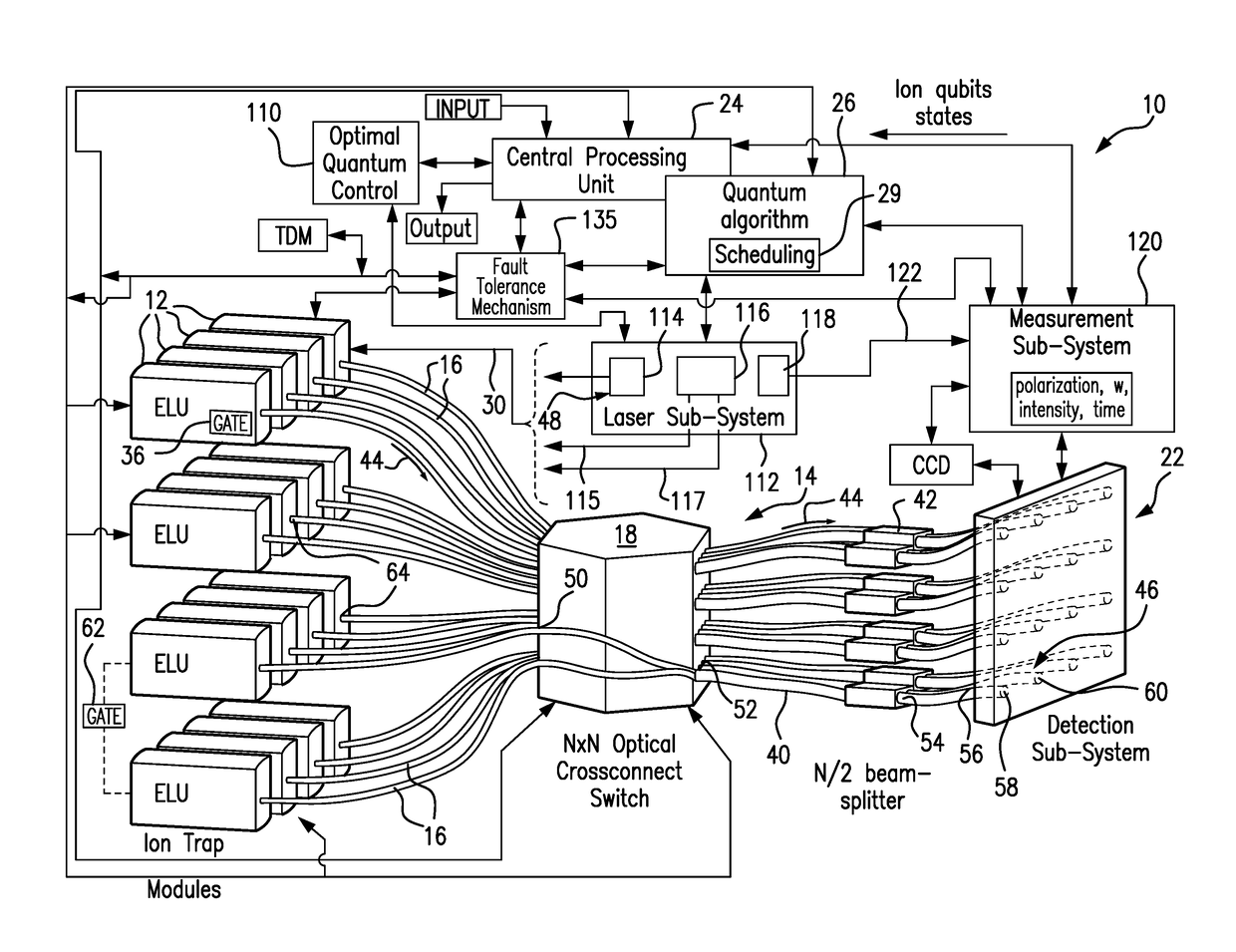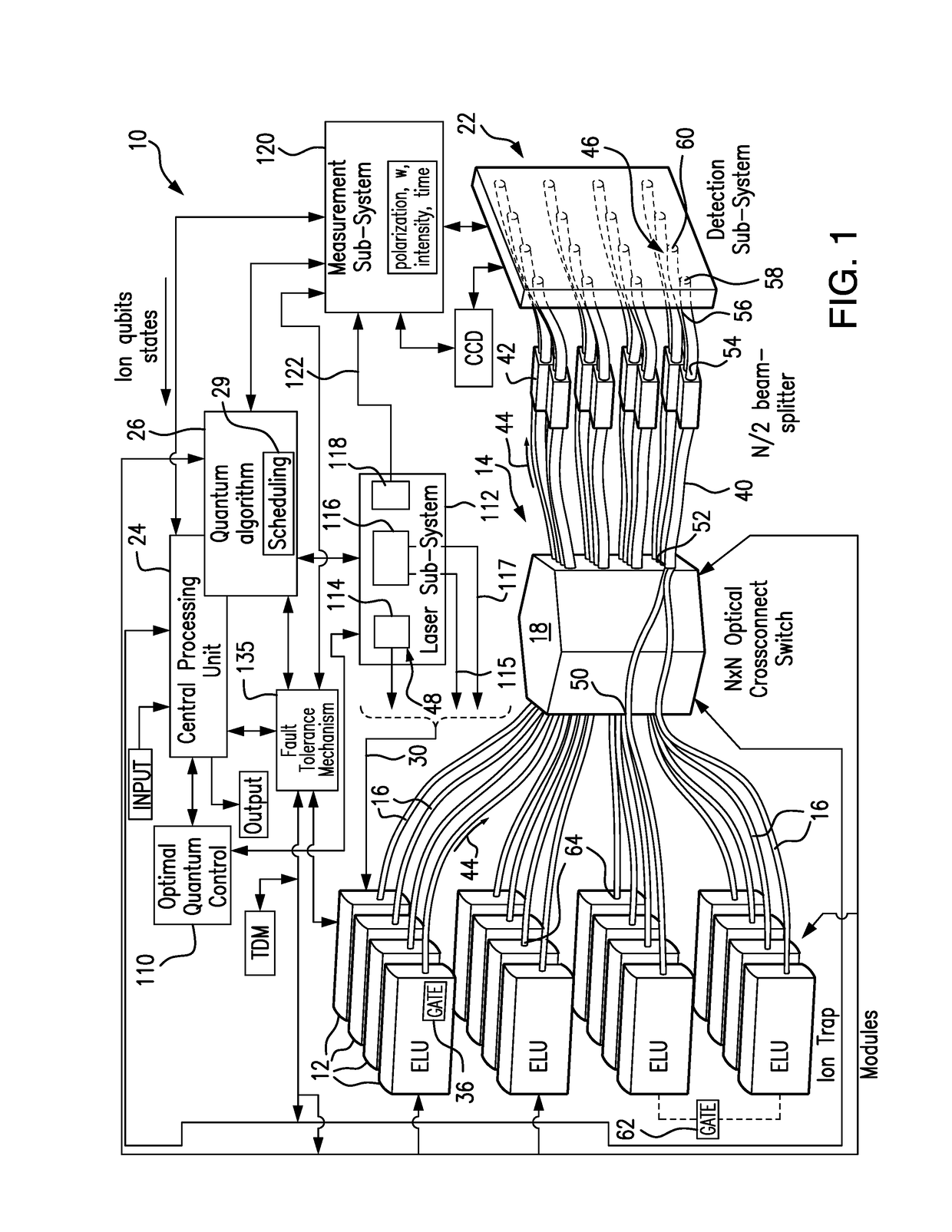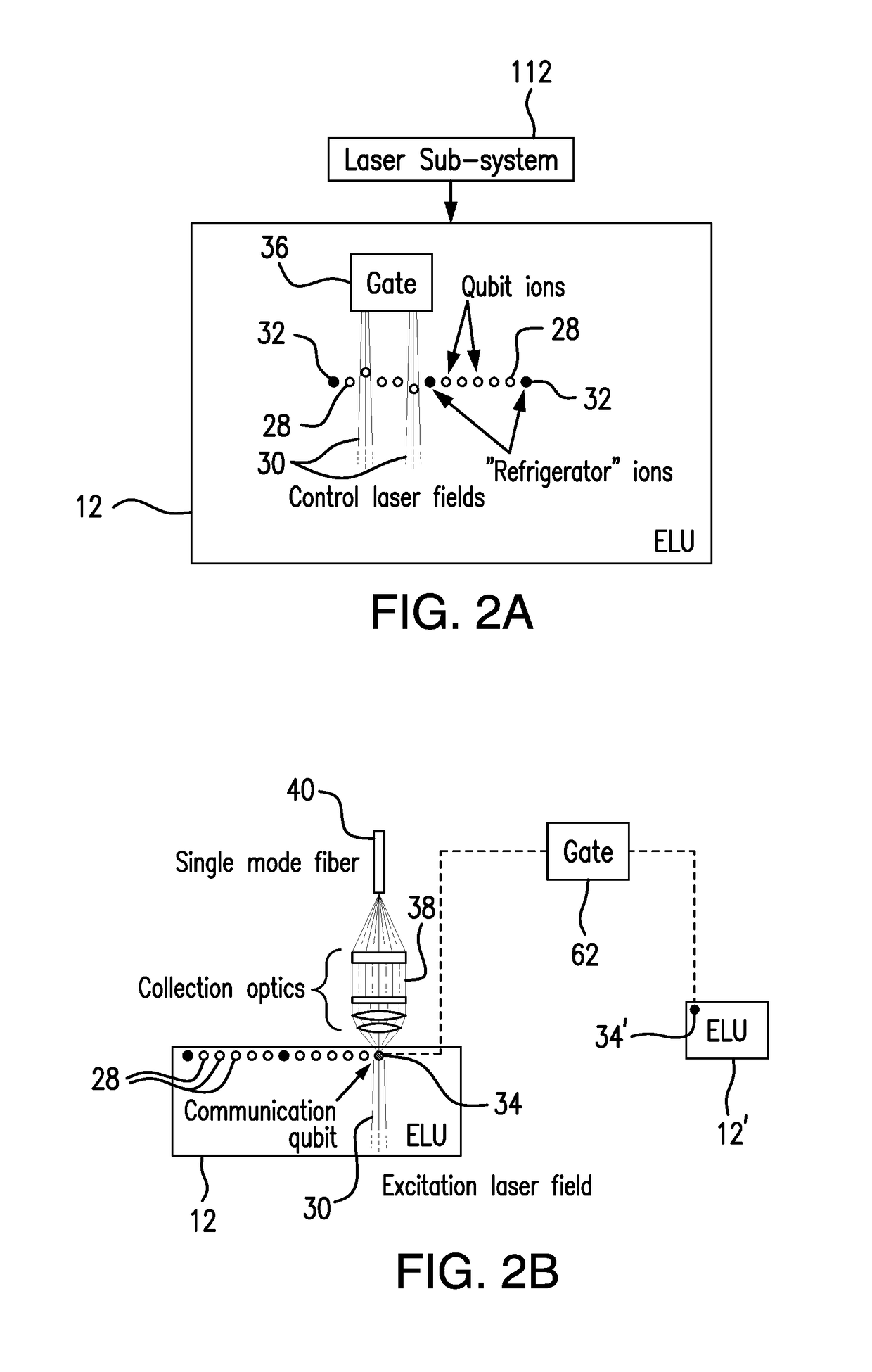Fault-tolerant scalable modular quantum computer architecture with an enhanced control of multi-mode couplings between trapped ion qubits
a quantum computer and modular technology, applied in the field of quantum computers, can solve problems such as gate errors, scale errors, and limited experimental characterization, and achieve the effect of reliable and effectiv
- Summary
- Abstract
- Description
- Claims
- Application Information
AI Technical Summary
Benefits of technology
Problems solved by technology
Method used
Image
Examples
Embodiment Construction
[0157]The subject Modular Universal Scalable Ion-Trap Quantum Computer (MUSIQC) is a hierarchical design for a quantum computer (QC) that uses a new approach to entangle both nearby and non-local qubits in a dynamically reconfigurable fashion as required by a computational problem to be solved. In executing large quantum algorithms supported by a Central Processor Unit, an interconnect architecture for moving quantum information (QI) within the QC has a large impact on the system scalability. MUSIQC presents a novel concept for achieving such scalability with technologies that are either already available or within an experimental reach.
[0158]Although the principles underlying the design and operation of the subject quantum computer are applicable to different types of memory qubits, such as stationary matter qubits including trapped ions, quantum dots, cold atoms, NV color centers in diamonds, and other quantum systems featuring strong optical transitions, as an example of one of m...
PUM
 Login to View More
Login to View More Abstract
Description
Claims
Application Information
 Login to View More
Login to View More - R&D
- Intellectual Property
- Life Sciences
- Materials
- Tech Scout
- Unparalleled Data Quality
- Higher Quality Content
- 60% Fewer Hallucinations
Browse by: Latest US Patents, China's latest patents, Technical Efficacy Thesaurus, Application Domain, Technology Topic, Popular Technical Reports.
© 2025 PatSnap. All rights reserved.Legal|Privacy policy|Modern Slavery Act Transparency Statement|Sitemap|About US| Contact US: help@patsnap.com



